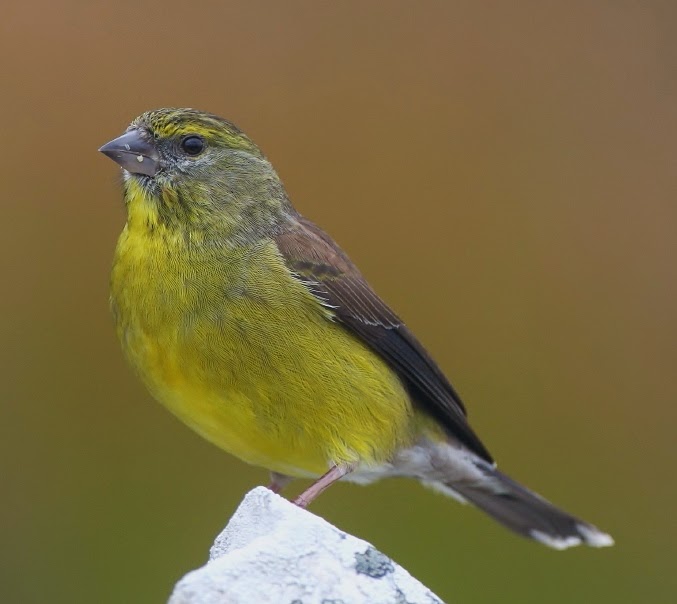 |
| Photo by Steve Hinton (Steve Hinton Wildlife Photography) |
Common name:
Cape siskin (en); canário-do-Cabo (pt); serin totta (fr); canario de El Cabo (es); Hottentottengirlitz (de)
Taxonomy:
Order Passeriformes
Family Fringillidae
Range:
This species is endemic to South Africa, only being found in the Eastern and Western Cape provinces.
Size:
These birds are 12-13 cm long and weigh 10-20 g.
Habitat:
The Cape siskin is mostly found in dry fynbos scrublands and coastal scrublands, also using clearing in dry tropical forests, fringes of succulent karoo vegetation, edges of pine plantations and village gardens.
Diet:
They feed on the seeds and buds of various grasses and scrubs, also taking flowers, nectar and some insects.
Breeding:
Cape siskins are monogamous and breed in August-December. They nest in a shallow cup of fine dry grasses and rootlets, lined with fine grass sometimes mixed with down, wool or hair. The nest is typically placed in a horizontal crevice, small depression or cavity in a rock face or tree. The female lays 3-5 eggs, which she incubates alone for about 13 days while being fed by the male. The chicks are fed by both parents and fledge about 19 days after hatching.
Conservation:
IUCN status – LC (Least Concern)
This species has a relatively large breeding range and is described as common to locally common. The population is suspected to be stable in the absence of evidence for any declines or substantial threats.







